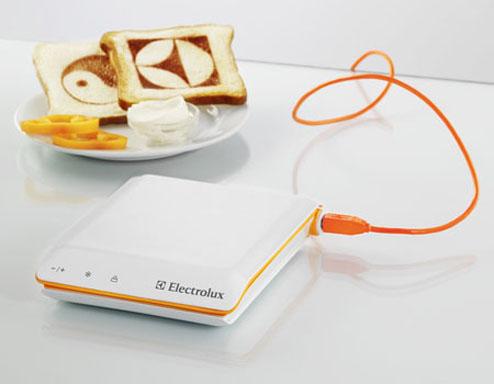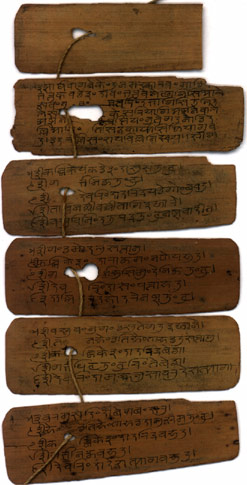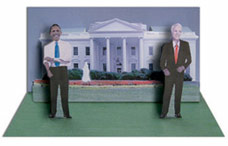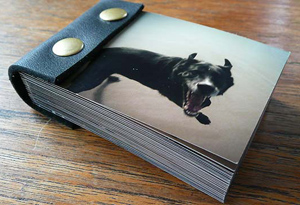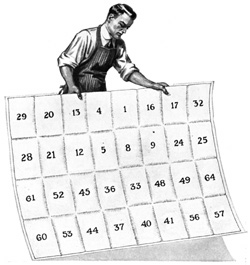 One of the problems with making your own books using an ink jet or laser printer is how to print them without lots of fancy software. My first books of my artwork and stories, with two pages per sheet and double sided, required me to devise an often complicated recipe for the order to print the pages. Then I discovered single sheet books. Because they are printed all on one side of a sheet, once I had a template, they were easy to design and quick to print and put together. They end up being small — from an 8-1/2 x 11″ sheet you get a 2-3/4 x 4-1/2″ book — but very easy to work with.
One of the problems with making your own books using an ink jet or laser printer is how to print them without lots of fancy software. My first books of my artwork and stories, with two pages per sheet and double sided, required me to devise an often complicated recipe for the order to print the pages. Then I discovered single sheet books. Because they are printed all on one side of a sheet, once I had a template, they were easy to design and quick to print and put together. They end up being small — from an 8-1/2 x 11″ sheet you get a 2-3/4 x 4-1/2″ book — but very easy to work with.
![]() Earlier this summer when I was making a book out of my haiku poems, I played around with several single sheet configurations. I was reminded how convenient they are to work with, so I wrote up some instructions and made a kit that includes directions for five different configurations and three books to make — each pre-printed and ready to fold, cut and assemble. And it also includes a Word template to use to design and print your own book from a single sheet. The kit is available here.
Earlier this summer when I was making a book out of my haiku poems, I played around with several single sheet configurations. I was reminded how convenient they are to work with, so I wrote up some instructions and made a kit that includes directions for five different configurations and three books to make — each pre-printed and ready to fold, cut and assemble. And it also includes a Word template to use to design and print your own book from a single sheet. The kit is available here.

